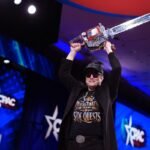Colossal Biosciences, known for his foreign purpose to raise the woolly mammoth by 2028, demands steady progress. This is proof: Genetically engineering mice to have a mammoth -like fur.
To design the woolly mouse, the scientists of the business found mouse versions of mammoth genes and then used CrisPR to edit mice embrios, Dr. Beth Shapiro, chief scientist officer at Colossal, told TechCrunch. Thereafter, the embryos were implanted in surrogate maucers.
The company says that the fur of the woolly mice of a color, texture and thickness that resemble the properties of a mammoth.
Colossal Biosciences believe that the woolly coat will enable its genetically designed mice to survive in cold climates. Yet the company must first approve of approval of The Institutional Committee for Animal Care and Use (IACUC), ensuring ethical and human animal research, before such experiments are conducted.
Shapiro said the company should test the cold tolerance of the designed mice to confirm whether these genes will improve the mammoth adaptation to cold environments.
Colossal’s approach to bringing back the mammoth involves mapping the entire genome of an extinct woolly mammoth and comparing it to his nearest living family member, the Asian elephant.
Investors are under the impression of the speed at which the company creates technologies, Ben Lamm, co-founder and CEO of Colossal Biosciences, told TechCrunch when the company announced a $ 200 million round at a $ 10.2 billion valuation in January.
In addition to working on a woolly mammoth, the company intends to bring back the Tasmanian Tiger and the Dodo Bird.
But that 2028 goal may not be realistic. According to David Gold, a professor of paleobiology to UC Davis, which produces multiple mutations in mice, is difficult, but it is not nearly as difficult as creating a woolly mammary.
“It’s exciting to see the mice produce a giant-like coat. But there are hundreds of differences between the DNA of an elephant and a mammoth, so there’s a long way to go, ‘Gold said. He added that although he believes that it will be possible to eventually create the woolly mammoth, there are many technical obstacles ahead.
Yet Lamm Colossal’s creation of the woolly mouse calls a ‘watershed moment’ for the company’s expansion mission.
“The animals were born healthy, and they had the exact phenotypes we predicted,” Lamm said. “The only thing that was unintentionally was the treasure factor. They are just much cute than we expected. “
(tagstotranslate) colossal biosciences
+++++++++++++++++++
TechNewsUpdates
beewire.org










